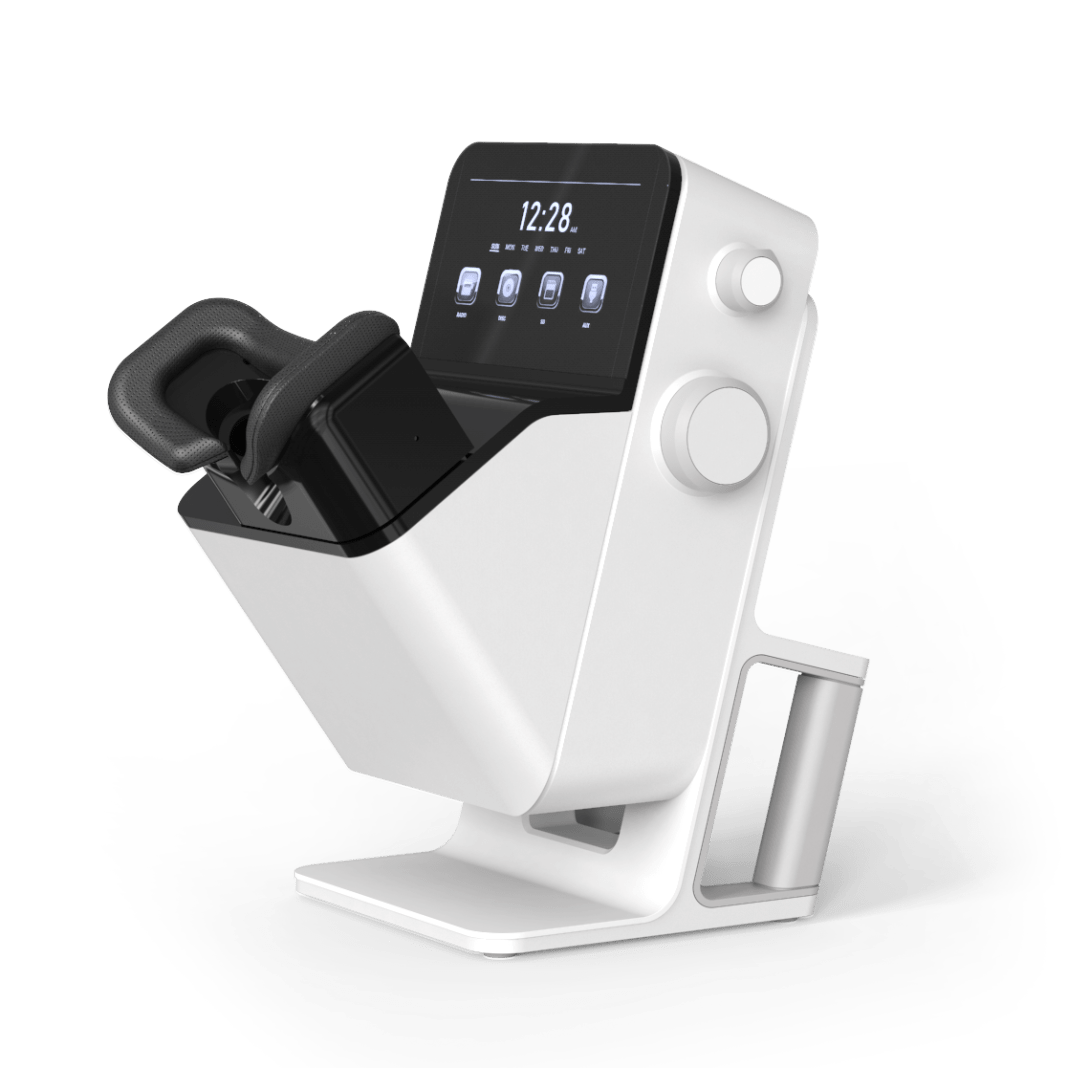Digital healthcare provider, Notal Vision, announced today that the US Food and Drug Administration (FDA) has granted De Novo authorization for its patient self-operated SCANLY® Home OCT device. Designated by the FDA as a Breakthrough Device for patients suffering from wet, or neovascular, age-related macular degeneration (nvAMD), SCANLY Home OCT aims to help improve personalized care for these patients.
SCANLY captures spectral-domain optical coherence tomography (OCT) images in a 10 by 10-degree area centered on the point of fixation. The proprietary, artificial intelligence (AI)-based Notal OCT Analyzer (NOA) segments and estimates the volume of hypo-reflective spaces (HRS)—important biomarkers in managing nvAMD—on OCT images.
Ophthalmologists will be able to prescribe the SCANLY Home OCT Monitoring Program, provided by the Notal Vision Monitoring Center, for greater disease insights through remote access to high-resolution OCT images and NOA image analysis between patients’ regularly scheduled office visits.
In two pivotal US trials involving over 500 patients, Notal Vision demonstrated that SCANLY is a safe and efficacious way to visualize intra- and subretinal hypo-reflective spaces.1,2 The user-friendly nature of SCANLY is illustrated in findings from the longitudinal pivotal study of nvAMD patients with a mean age of 77 years.2 97% of all participants were able to successfully obtain OCT images at home. The participants performed a total of 5,426 scans in the study eye, with 97% of all imaging attempts being successful. An adherence rate of 5.9 scans/week was observed. The self-imaging by patients took 48 seconds on average.
After enrollment in the SCANLY Home OCT Monitoring Program and delivery of the device via courier, patients complete set up and begin daily scanning from the comfort of home. At the end of each session, images are automatically transmitted via a built-in wireless connection to the Notal Health Cloud for analysis. Physicians can review data, set eye-specific notification criteria, including a volume threshold for total retinal hypo-reflective (TRO) spaces, and receive notifications through a HIPAA-compliant web portal. Patients are supported by clinically trained staff at the physician-led Notal Vision Monitoring Center, which has monitored more than 44,000 patients since introduction of the ForeseeHome®AMD Monitoring Program, a Medicare covered service for monitoring intermediate AMD, in 2016. As the patients’ first point of contact, the monitoring center manages insurance and benefits verification, phone support, and compliance reminders on behalf of the physician’s office.
“It has been a privilege to participate in several Home OCT clinical trials. I was impressed by the overall positive patient experience and their ability to reliably self-image without any assistance or training from our clinic,” said Jeffrey S. Heier, MD, Director of the Retinal Service and Retinal Research at Ophthalmic Consultants of Boston. “The AI-based image analysis is an added benefit of the imaging technology, as it facilitates monitoring for those practices managing a large number of patients. I am eager to have this game-changing technology available for our patients.”
A set of established and dedicated CPT codes for remote OCT (0604T, 0605T and 0606T) allows physicians and the monitoring center to bill for their services every 30 days.* The company will work with the community and Medicare Administrative Contractors to establish coverage and payment for remote OCT billing codes.
“We are very excited to receive FDA authorization to market SCANLY Home OCT as the first-ever patient self-operated, home-use device that gives physicians remote access to high-resolution, cross-sectional retinal images and AI-based analytical biomarkers of their patients eyes between office visits,” said Kester Nahen, PhD, CEO of Notal Vision. “We look forward to supporting our referring physicians in navigating their wet AMD patients’ care.”
”Building on our ForeseeHome patient engagement platform, this SCANLY Home OCT FDA authorization greatly advances our mission of enabling physicians to preserve patient’s functional vision,” said Guy Katsav, Notal Vision’s Chairman and Managing Director at Ganot Capital. “The personalized patient care offered by the SCANLY Home OCT Monitoring Program, coupled with the early disease detection offered by our Medicare reimbursed ForeseeHome Program, will allow our patients the possibility to maintain their independence and never miss their grandchild’s smile”.
Notal Vision’s SCANLY Home OCT has the potential to support current and future advances in retinal disease management. For example, pharmaceutical companies have been evaluating the role of the technology in several longitudinal clinical trials since 2021, and the DRCR Retina Network is currently conducting Protocol AO, a two-year, 600-patient randomized controlled trial involving Home OCT.3



